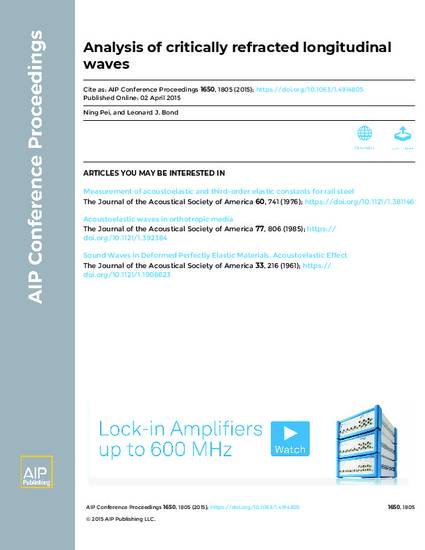
Fabrication processes, such as, welding, forging, and rolling can induce residual stresses in metals that will impact product performance and phenomena such as cracking and corrosion. To better manage residual stress tools are needed to map their distribution. The critically refracted ultrasonic longitudinal (LCR) wave is one such approach that has been used for residual stress characterization. It has been shown to be sensitive to stress and less sensitive to the effects of the texture of the material. Although the LCR wave is increasingly widely applied, the factors that influence the formation of the LCR beam are seldom discussed. This paper reports a numerical model used to investigate the transducers' parameters that can contribute to the directionality of the LCR wave and hence enable performance optimization when used for industrial applications. An orthogonal test method is used to study the transducer parameters which influence the LCR wave beams. This method provides a design tool that can be used to study and optimize multiple parameter experiments and it can identify which parameter or parameters are of most significance. The simulation of the sound field in a 2-D "water-steel" model is obtained using a Spatial Fourier Analysis method. The effects of incident angle, standoff, the aperture and the center frequency of the transducer were studied. Results show that the aperture of the transducer, the center frequency and the incident angle are the most important factors in controlling the directivity of the resulting LCR wave fields.
Available at: http://works.bepress.com/leonard_bond/78/

This proceeding may be downloaded for personal use only. Any other use requires prior permission of the author and AIP Publishing. This proceeding appeared in Pei, Ning, and Leonard J. Bond. "Analysis of critically refracted longitudinal waves." AIP Conference Proceedings 1650, no. 1 (2015): 1805-1814. DOI: 10.1063/1.4914805. Posted with permission.